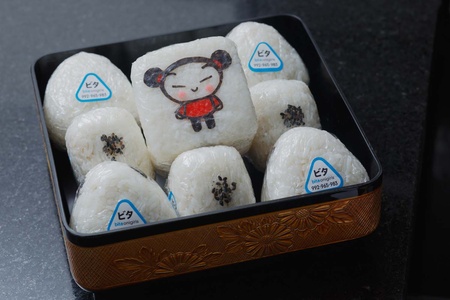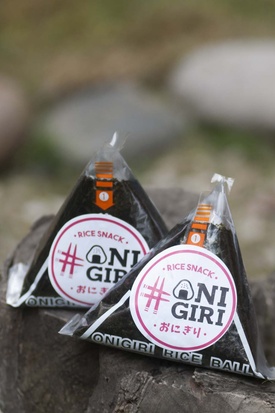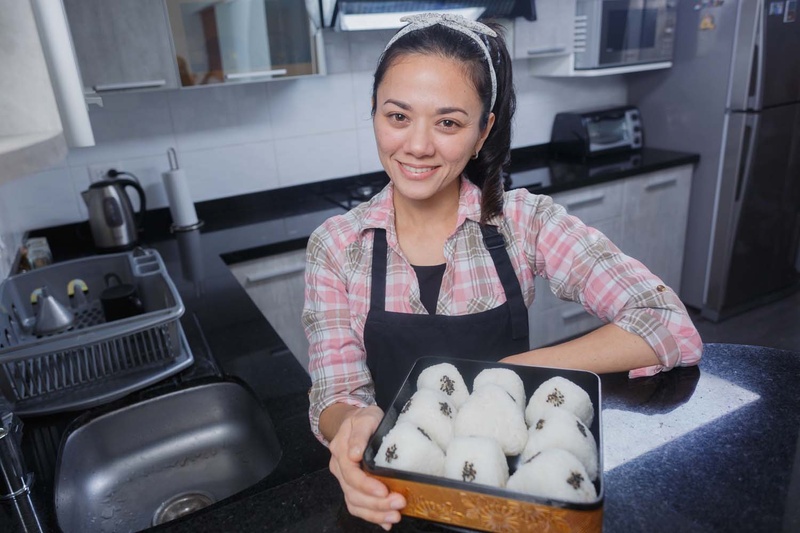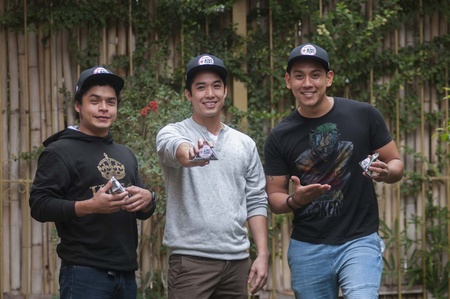Practical, delicious and with varied flavors. This is how the charm of onigiri could be summarized, this traditional rice ball with different fillings that is “fast food” in Japan and that in recent years has been becoming more frequent on the menu and vocabulary of Peruvians. Although it is in sushi bars throughout Lima, where it still occupies an expectant place behind makis, its greatest boost has come from initiatives that some Nikkei have undertaken to take it to more places.
One of the first places to concentrate on this product has been Onigiri Store which, from a basement in the Arenales Shopping Center, is making more people, especially otakus, consume it frequently, from the traditional ones, filled with miso and tuna , to the brand's creations, including the BBQ style, the spicy tuna, the meat with curry, the tenderloin or the yogi onigiri, with tuna cream and a sweet touch.
They are all made in their small establishment, where young people interested in Japanese cuisine come, the same ones who follow the brand to the events of the Nikkei community, where they are also present with the onigiri with chicken in teriyaki sauce, the lucky sakura ( stewed tuna) or the eggy, egg with bacon. “We have twelve flavors that have lasted for several years and we continue to test them,” explains Danny Moromisato, manager of the store, who created the brand with Cathy Namisato and César Morisaki in 2014.
Fun onigiris
In 2014, Myriam Okamoto created Bita Onigiris with the aim of dedicating part of her time to something she loves: preparing onigiris and making people happy when they try them. She had learned to make them at the Sato Ramen restaurant and learned about them as a child, when she saw her obaachan prepare them. “I chose the onigiris because they remind me of the ones she prepares with just rice and salt,” says 'Bita', as she is affectionately called.

The first ones he made were pork miso and tuna with mayonnaise, and little by little he began to receive more orders and flattering comments. “I have tried other fillings such as “Pío Pío Karé”, with chicken breaded with curry, “El Palteado”, stuffed with frankfurter with avocado, and “Umechan”, with umeboshi with mayonnaise and golden garlic.
Currently, in addition to the first two flavors, it has two more fillings: “Bita Niku”, ground beef with wasabi and caramel pecans, and “Bita Salta”, flambéed beef lomo saltado style and potato chips. According to Myriam, there are many people who still do not know this popular recipe of Japanese cuisine, which is why she has devised some fun onigiris molded in the shape of cartoons and in colors (Pikachu, Elmo from Sesame Street, Homer Simpson, among others). ).
They come as a gift with each order (from 18 units) and it takes one to two hours to prepare each one due to the level of difficulty of the figure. To make it a surprise, the choice of drawing is made by 'Bita', who also draws phrases, logos, animals and other animated characters on the Gohan that arouse the interest and appetite of adults and children.
Onigiri delivery
The popularity of onigiri is due, in part, to the fact that it is easy to consume, which is why more stores and establishments offer it as a healthy snack. In that sense, quality input is the key. In 2010, Kenny Kuahara and Sergio Kanashiro created a Nikkei cuisine catering company, catering for events or delivering home delivery, and the success they had has led them to focus on onigiri, seeking a high-quality product.
Thus, this year Fugu #Onigiri was born, which can also be found at the Peruvian Japanese Cultural Center in four flavors: pork with miso, tuna with mayonnaise, teriyaki chicken with avocado and umeboshi with furikake. “We work with imported supplies that do not reach Peru, we bring them from the United States like many Japanese franchises that are in that country do,” says Kanashiro, who in 2014 did an internship at a sushi bar in California where he saw the success of onigiri. .

“In Japan and the United States you can find onigiri in convenience stores; the Japanese prepare it when they don't have time to cook,” he explains. A great success of the project of these young people in their twenties is the packaging, which allows the rice not to be in contact with the nori seaweed, so it does not become moist. When the packaging is opened following a few simple instructions, the seaweed is fresh and crunchy, offering an unbeatable experience.
Kuahara says that they are already attending various events at AELU and others outside the community, such as at the Pontifical Catholic University. They were recently at Comicon, and in the coming months they hope to launch new flavors, including a vegetarian one. “Every day we renew our products at points of sale such as the Tenshi store or Edo Market so that they always find it fresh,” he adds.
* This article is published thanks to the agreement between the Peruvian Japanese Association (APJ) and the Discover Nikkei Project. Article originally published in Kaikan magazine No. 115, and adapted for Discover Nikkei.
© 2018 Texto y fotos: Asociación Peruano Japonesa











